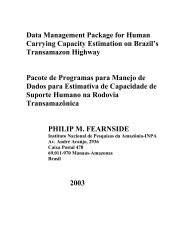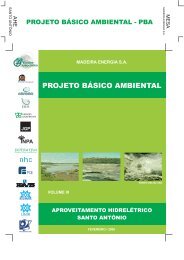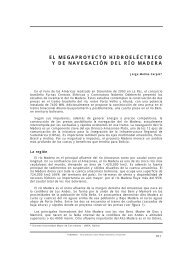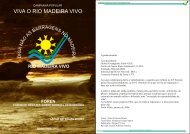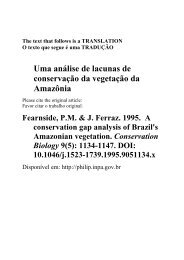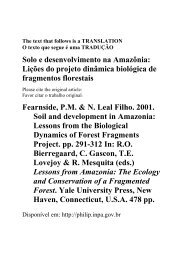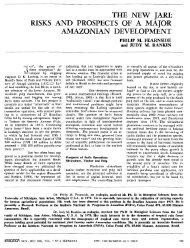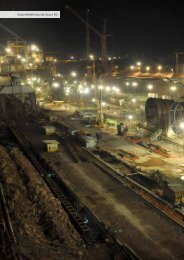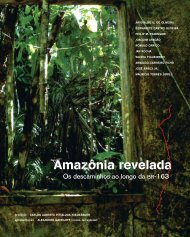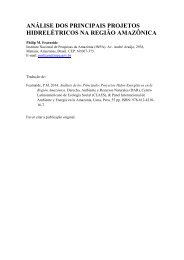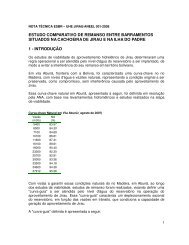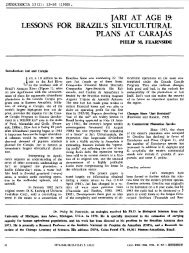THE FUTURE OF THE AMAZON - Philip M. Fearnside - Inpa
THE FUTURE OF THE AMAZON - Philip M. Fearnside - Inpa
THE FUTURE OF THE AMAZON - Philip M. Fearnside - Inpa
You also want an ePaper? Increase the reach of your titles
YUMPU automatically turns print PDFs into web optimized ePapers that Google loves.
11category is “high-impact areas,” which are regions in which primary-forest cover islikely to be absent or markedly reduced, and heavily fragmented. Such areas are highlyvulnerable to edge effects, fires, logging, and overhunting, and are severely degradedecologically. “Moderate-impact areas” have mostly intact primary-forest cover (>85%)but contain localized forest clearings and some roads, and may be affected by logging,mining, hunting, and oil and gas exploration. “Low-impact areas” have nearly intactprimary-forest cover (>95%) but can experience illegal gold-mining, small-scale farming,hunting, hand-logging, and non-timber resource extraction (e.g. rubber-tapping).“Pristine areas” have fully intact primary-forest cover and are free from anthropogenicimpacts aside from limited hunting, fishing, and swidden farming by traditionalindigenous communities.The optimistic and non-optimistic scenarios differ in that the former assumes thathighways, roads, and infrastructure projects will generate more-localized effects, andthat conservation areas will be less prone to disturbances (Table 3). The sizes of bufferzones used in the models were necessarily somewhat arbitrary, but have an empiricalbasis in our analyses of past deforestation. In the non-optimistic scenario, for example,we assumed that paved highways would create a 50 km-wide zone of heavily degradedforests on each side (Table 3), because our analysis suggested that these areasaveraged



